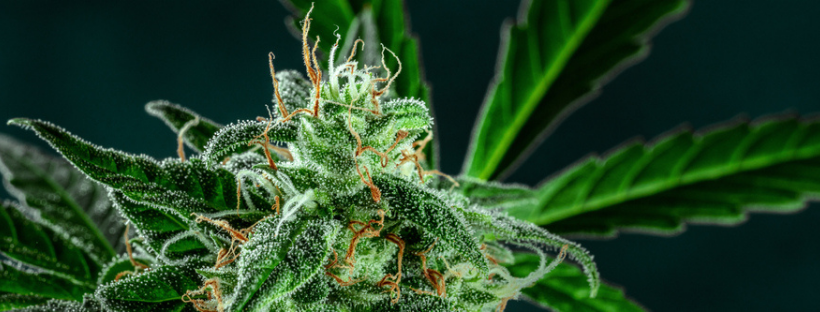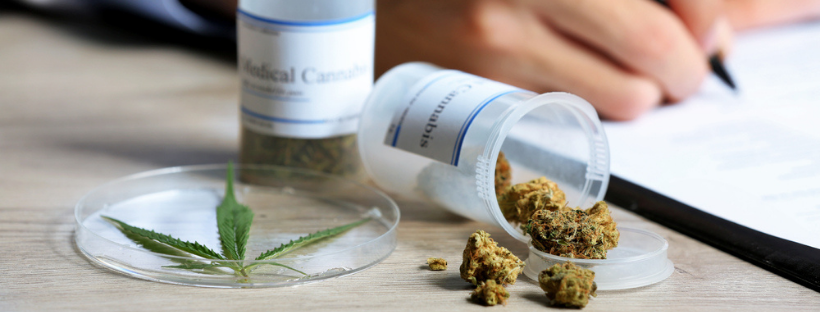Cannabis
Marijuana for Arthritis: How Cannabis Relieves Joint Pain and Inflammation
There are many reasons that people choose to use marijuana, from relaxation to the benefits of its medicinal properties. One of the many conditions that people often use cannabis to treat is arthritis, due to cannabis’ ability to relieve the inflammation and joint pain associated with the condition.
CBD Vs. THC and Marijuana
If you don’t want the psychoactive effects of marijuana or live in a state where cannabis is illegal, you may consider using CBD to treat your arthritis instead. It has been linked to many of the same benefits, but it is legal at the federal level in the United States.
As a refresher, CBD is the major non-psychoactive cannabinoid in marijuana, while THC is the main psychoactive cannabinoid. THC is illegal at the federal level, but under the 2018 Farm Bill, CBD from hemp is legal. To qualify as hemp-derived, it must contain less than 0.3% THC.
You can find CBD in various forms, including tinctures, edibles, pills, and more. There are even some CBD hemp flowers.
Research Is Limited
When discussing medical marijuana for arthritis or any other condition, it is crucial to keep in mind that research has been very limited so far. This is because of the classification of marijuana as a Schedule I substance in the United States. Even so, there has been some early research done in the US as well as in other countries that don’t have as many legal hurdles.
A large portion of the evidence supporting marijuana for arthritis, however, is anecdotal. While this is useful, you also need to take it with a grain of salt, as anecdotal evidence is based on self-reporting.
Criticism on the Research
The lack of research into medical marijuana for arthritis led a 2014 study in Arthritis Care & Research to not recommend it. The paper in question pointed to the potential side effects of marijuana and variations in the THC concentrations found in plants.
However, those with arthritis don’t necessarily agree. After all, choosing the marijuana you use carefully or opting for an oil or edible with a pre-dosed amount overcomes the issue with variations in THC content. Additionally, some of the side effects, like lung issues, only apply if you vape or smoke the marijuana. On top of that, plenty of anecdotal evidence exists to show that the side effects of marijuana can be less than those of prescription drugs, especially in the case of those that carry a risk of addiction.
Some of the Research Supporting Marijuana for Arthritis
As mentioned, there is still limited research into using marijuana to treat arthritis symptoms, and not all of it is conclusive. However, some of the promising studies include the following.

A Large Review
One of the largest reviews, “The Health Effects of Cannabis and Cannabinoids: The Current State of Evidence and Recommendations for Research” published in 2017 found “substantial evidence” that cannabis can effectively treat chronic pain.
Topical CBD
One study on topical CBD, “Synthetic Transdermal Cannabidiol for the Treatment of Knee Pain Due to Osteoarthritis,” had mixed results.
Sativex Studies
A commonly referenced 2006 study looked at Sativex, an oral spray with CBD and THC. It showed that this spray had promise in relieving arthritis pain.
Animal Studies
Most of the research into cannabis and CBD involves animal studies. These studies suggest that CBD relieves pain and reduces inflammation. Also, plenty of anecdotal evidence to supports this in humans.
For example, a study from 2017 found that CBD prevents nerve damage and pain in rats with osteoarthritis. A 2016 study also in rats had similar results, finding that CBD reduced pain and inflammation in rats with arthritis. A 2011 study also found that CBD reduces inflammation in rats with arthritis. In 2014, another study concluded that CBD showed promise for treating osteoarthritis based on research in rats.
Marijuana and CBD for Arthritis Are Popular
Even with the relative lack of official research into marijuana and arthritis, it is incredibly popular.
University of Toronto Survey
One study from the University of Toronto published in 2020 found that 20% of patients who visit an orthopedic surgeon about chronic musculoskeletal pain treat that pain with cannabis or a derived product.
One important caveat: Most of these people used CBD, which is not psychoactive. Only about 25% consumed something with THC.
The study also found that two-thirds of those who don’t use it to treat muscle and joint pain are interested in trying to do so. Many of these respondents said they are waiting for more knowledge about it.
This same survey also found that most of the people who used cannabis to relieve pain related to arthritis and other musculoskeletal conditions were happy with the results. 90% reported it effectively managed their pain. Additionally, 40% said it reduced reliance on various other pain medicines. Almost 60% even said cannabis produced better results for them than other drugs did.
Arthritis Foundation Poll
The Arthritis Foundation also conducted a recent poll that specifically looked at patients with arthritis and CBD use. 29% of respondents currently used CBD. Of those, 63% used it daily, and 26% used it several times every week.
On top of that, 79% of respondents either currently used CBD, had previously used it, or considered using it.
Of those currently using CBD for their arthritis, 94% said it was to manage pain.

How Marijuana May Help Arthritis
Between the anecdotal evidence and the limited studies that have been conducted, there are several ways that marijuana may help people with arthritis. These include:
- Improving sleep
- Reducing morning pain
- Reducing joint inflammation
- Reducing fatigue
- Improving physical function
In the previously mentioned Arthritis Foundation poll, 67% of those who currently use CBD said they noticed improved physical function, and 30% said it helped relieve fatigue.
Why Marijuana May Help Arthritis
Knowing marijuana may reduce inflammation and pain associated with arthritis is one thing, but understanding why is another.
The reason comes down to the presence of cannabinoids, including CBD and THC. These cannabinoids interact with receptors in our endocannabinoid system that affect the body’s pain and inflammation.
Scientists believe that CBD might block receptors that let anandamide, an endocannabinoid, in the body increase. It appears that CBD and other cannabinoids change how the relevant receptors respond to signals. That, in turn, can reduce pain and inflammation.
Ways to Use Marijuana for Arthritis
You will have a lot of options as to how you want to consume marijuana to help reduce the symptoms of your arthritis.
Smoking
You can choose to smoke marijuana to take advantage of its effects. This is one of the quickest ways for it to enter your system, but it can potentially harm your lungs and respiratory system as a whole.
Vaping
Vaping falls into the same category as smoking. It will deliver the effects of the marijuana quickly, but it is also harsh on your lungs.
Tinctures or Oils
One of the most popular methods of consuming cannabis for arthritis is with a tincture or oil. These are extracts from the marijuana plant that come in small bottles with droppers.
You can place the oil directly in your mouth under your tongue, wait a minute, and swallow. You will notice the effects quickly.
You can also add a few drops of the oil to food or drinks. That will slow down how long it takes to notice the effects to some extent.
Also, tinctures and oils make it easy to choose the exact amount of THC, CBD, or other cannabinoids you want to consume, and they are more subtle for use in public.
Sprays
Sprays are very similar to tinctures, but they are designed for you to spray underneath your tongue. Like tinctures, they enter your bloodstream for quick absorption.
Topical Creams
These are lotions or creams that include CBD or other components of cannabis in their list of ingredients. With these, you can target the specific area of your body that suffers from arthritis pain.

Edibles
Edibles or cannabis-infused foods are a delicious and popular way of consuming cannabis for arthritis. Just keep in mind that the cannabis has to go through your digestive system, so you may not notice the effects for up to two hours after consuming the edible. On the other hand, the effects also last longer.
If you choose an edible, be extra careful with dosing. It can be challenging to calculate dosing in homemade edibles. To get an accurate dose, either buy edibles or measure very carefully and be sure to mix the cannabis throughout the item while cooking or baking.
Remember that you may not notice effects for two hours. New edible users commonly consume more when they don’t immediately notice the effects, only for it all to kick in and overwhelm them. Being patient lets you avoid this.
Capsules
You can also find capsules with cannabis or just CBD or THC. From a dosing perspective, these will be the most accurate method. However, they don’t work well if you need an amount that isn’t the exact size of a pill. They also take a while for you to feel the effects, although not necessarily as long as it takes for edibles.
Potential Side Effects
Before you decide to use medical marijuana to ease your symptoms of arthritis, you should be aware of the side effects. The good news is that, compared to traditional medicines, cannabis tends to have fewer side effects.
That being said, remember that the THC in marijuana is psychoactive. You should not drive within eight hours after consuming it.
Additionally, some of the methods of consuming marijuana come with major potential consequences. Vaping or smoking it can negatively affect your respiratory and lung health.
That being said, potential side effects for CBD, the non-psychoactive component in marijuana, include:
- Tiredness
- Dry mouth
- Diarrhea
- Reduced appetite
- Negative interactions with blood thinners
Potential side effects of medical marijuana include:
- Nausea
- Headache
- Coughing
- Dry eyes
- Lightheadedness
- Dissociation
- Increased appetite
- Paranoia
It is also important to keep in mind that marijuana or even just CBD may interact with medications. CBD, in particular, can interact with corticosteroids, celecoxib, tramadol, certain antidepressants, naproxen, and certain fibromyalgia medications.
Because of that, anyone with arthritis should talk to their doctor before using medical marijuana or CBD.

How to Stay Safe When Consuming Marijuana for Arthritis
If you decide to try using medical marijuana to reduce your symptoms of arthritis, you should take a few important precautions to stay safe and reduce your chances of potential negative effects. These apply to any cannabis- or hemp-based products, including CBD products without THC.
Start With a Small Dose
The risk of experiencing side effects increases as you increase your dose. As such, you should start by trying a smaller dose. Then, if you don’t notice results, increase your dose the next day or in a few days. Do not try to take more the same day; you may just be experiencing delayed effects.
Choose Your Marijuana and Products Carefully
Whether you opt to use marijuana buds or a derivative product like oil or an edible, always choose the product carefully. Only buy products from reputable companies. Consumers bear most of the burden in confirming that they choose safe marijuana or CBD products. For any derivative product, like edibles or oils, always look for a product with third-party lab testing information. This is even sometimes available for the buds or flowers themselves, although not always.
The Bottom Line
As with most things related to marijuana, there is extremely limited research into the ability of marijuana to treat the symptoms of arthritis. Some of the early research is inconclusive, while other research shows promise. Extensive anecdotal evidence from people with arthritis who experience relief from pain and inflammation complements this research. If you decide to use marijuana to help treat your arthritis, consult your doctor and start with a small dose.


